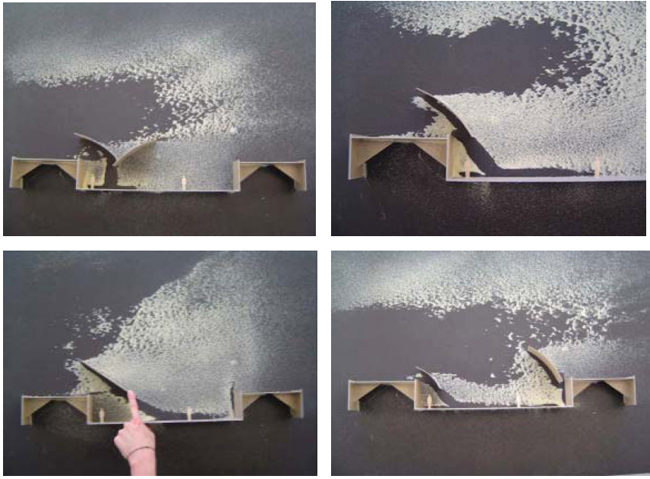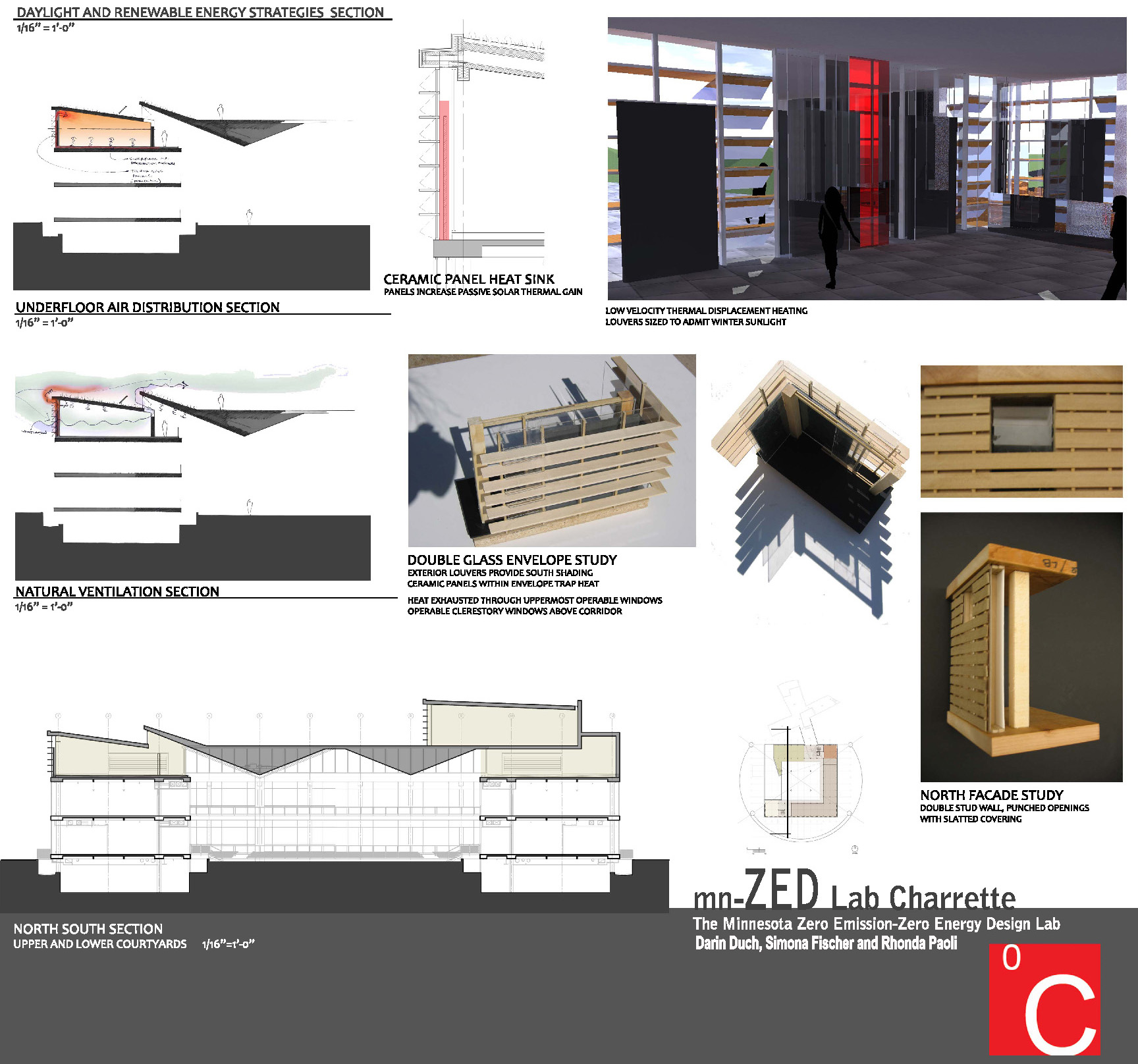Spring 2008 6.5 week TECHNOLOGY MODULE- Luminous and Thermal Design: An Ecological Approach to Zero-Energy Carbon Neutral Design
Ecological Envelopes: Fivefold Functionality

Design Performance Objective |
Ecological Envelopes Analysis
Exterior computer studies of the building envelope and shading systems.
|
Students: Egon, LaVenture, and Tanaka
|
Software/Tools: |
|
|
Spring 2008 6.5 week TECHNOLOGY MODULE- Luminous and Thermal Design: An Ecological Approach to Zero-Energy Carbon Neutral Design
Ecological Envelopes: Fivefold Functionality
• To integrate the ecological envelope design for daylighting, heating, and ventilation with other ecological opportunities.
• To foster a fivefold approach to ecological form and functionality.
|
Investigative Strategy |
In Project Four, students revised their initial design proposal to explore the integration of ecological concepts and passive and active approaches to lighting, heating, and ventilation at the scale of the building envelope. Their challenge was to consider the opportunities of the building skin as an ecological envelope. They were are asked to consider the concept of “fivefold functionality” by exploring how the envelope might address multiple issues such as the integration of passive and active systems for heating and cooling as well as additional ecological concerns such as water harvesting, electric energy generation, creation of habitat, health and well-being, beauty, connection to place, etc.
|
Evaluation Process |
• Three physical study models of the envelope detail at ½” scale.
• Three annotated envelope details at ½” scale.
|
|
Information about the Project and Studio |
• course outline
• project outline |
Evaluative Criteria |
• Clarity and execution of design intention demonstrated in the models
• Clarity and execution of design intentions demonstrated in the annotated sections
• Clarity and execution of precedent studies |
Cautions/Possible Confusions |
Emphasis should be placed on the importance of comparing and contrasting envelope design strategies (section, details, materials) to understand the design implications for daylighting and thermal performance. The project is intended to encourage experimentation and to gain qualitative and quantitative understanding of the envelope design as it is embodied in design decisions. The project is not seeking a single answer or solution. |
Range of Applicability in terms of CLIMATE |
ALL |
Range of Applicability in terms of TYPE |
ALL |
Reference Material |
|
Duration of Exercise |
Three days. |
Degree of Difficulty / Previous Knowledge Required |
Introductory graduate level. |
| |


Ecological Envelopes Analysis
Students: Duch, Fischer, and Paoli
Computer and physical model studies of the interior and exterior envelope and shading systems. |
|
|
|

